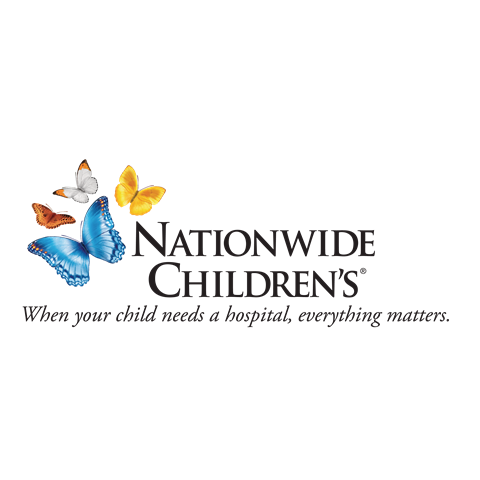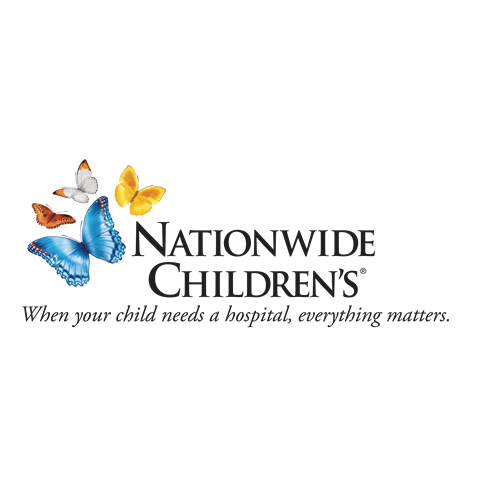Available Technologies
# of Displayed Technologies: 10 / 20
Categories
 Salvianolic Acid (SAA) Treatment of FSHD
Salvianolic Acid (SAA) Treatment of FSHD
TS-002175 — The third most common type of muscular dystrophy, Facioscapulohumeral Muscular Dystrophy (FSHD), affects over 870,000 individuals worldwide by causing debilitating pain, muscle weakness, fatigue along with many other symptoms in their face, shoulders, upper arms and lower legs. Researchers at Nationwide Children’s Hospital created a treatment using Salvianolic Acid (SAA) as a drug therapy for neuromuscular disorders including FSHD.
SAA, a natural compound found in the Salvia plant, has never been used for treating FSHD or any other neuromuscular disorder before. The compound inhibits protein methyltransferase (PRMT1), protects cells from double-homeobox gene 4 (DUX4) induced death and reduces the addition of methyl groups on t…
- College:
- Inventors: Harper, Scott; Eidahl, Jocelyn; Knox, Renatta; Wallace, Lindsay
- Licensing Officer: Eidahl, Jocelyn
 Gene Therapy for CMT1B
Gene Therapy for CMT1B
TS-002174 — Currently, no cure exists for Charcot-Marie tooth type 1B (CMT1B). Inventors and specialists in Gene Therapy at Nationwide Children’s Hospital invented a methodology along with sequences for using microRNAs (miRNA) to inhibit and replace abnormal expressions of the myelin protein zero (MPZ) gene. Affecting 1 in 30,000 people, CMT1B is caused by more than 200 mutations of the MPZ, the essential protein needed for a healthy and efficient peripheral nervous system. The accumulation of mutant MPZ genes will result in, but not limited to, muscle weakness, atrophy, lost of sensation in the lower legs and feet and sensory loss.
These methods can treat, delay the progress of and prevent diseases caused by the mutations. This gene therapy knocks down MPZ gene expression with nucleic acid encoded artificial microRNAs hybridized to target nucleic acid sequences at the mRNA level and a nucleic acid encoding a codon-optimized MP…
- College:
- Inventors: Rashnonejad, Afrooz; Harper, Scott
- Licensing Officer: Eidahl, Jocelyn
 Adeno-Associated Virus Delivery of CLN8 Polynucleotide
Adeno-Associated Virus Delivery of CLN8 Polynucleotide
TS-002095 — About 3 of every 100,000 births are affected by Batten disease, a disorder that prevents the body from removing cellular waste like lipids and proteins. The build up of cellular waste throughout the body can cause seizures, vision loss, delays in thinking, abnormal movements and death. Researchers at Nationwide Children’s Hospital created a new intrathecal gene therapy using Adeno-Associated viral vectors for Batten Disease caused by mutations in the CLN8 gene. They generated an Adeno-Associated viral vector serotype 9 (AAV9) that contains the human CLN8 cDNA driven by a promoter.
Additionally, they designed a new concept of intrathecal dosing which calculates the dosage by the size and growth rate of the nervous system and cerebrospinal fluid. The intrathecal gene therapy method can be used for Batten disease caused by mutations in the CLN8 gene along with other gene therapy…
- College:
- Inventors: Meyer, Kathrin; Kaspar, Brian; Likhite, Shibi
- Licensing Officer: Eidahl, Jocelyn
 Occupational Therapy Batten Assessment
Occupational Therapy Batten Assessment
TS-002008 — Effecting three of every 100,000 births, Batten Disease affects the body’s ability to discard cellular wastes like lipids and proteins leading to build up in cells. The build up can cause seizures, vision loss as well as cognitive and mobility impairments. Occupational therapist, Virginia B. Goddard, developed the Batten Disease assessment to better encapsulate patients’ functional abilities. The assessment measures patients’ daily activities, functional fine motor skills, visual abilities, stereognosis abilities, sensory responses and behavior. These categories are broken down into smaller activities and each activity is scored on a scale of 0 to 4: 0 marking minimal to no impairment and 4 marking severe or complete impairment. At the end of the assessment, occupational therapists can calculate a final score out of 76 to measure impairment severity.
- College:
- Inventors: Goddard, Virginia
- Licensing Officer: Eidahl, Jocelyn
 GRIN2D RNAi Gene Therapy to Treat Epilepsy
GRIN2D RNAi Gene Therapy to Treat Epilepsy
TS-002006 — Overexpression of the GRIN2D gene can cause Developmental and Epileptic Encephalopathy (DEE) in which individuals may experience developmental delays or intellectual disabilities, epilepsy, abnormal muscle tone, movement disorders, autism spectrum disorder and cortical visual impairment. Currently, only supportive care is available. Genetic Researchers at Nationwide Children’s Hospital developed a RNAi gene therapy to treat epilepsy caused by GRIN2D. They propose decreasing the expression of GRIN2D through a gene-level specific reagent which will knock down the mRNA containing the variant postnatally. As a result, reducing the possibility of children developing GRIN2D-related DEE.
- College:
- Inventors: Harper, Scott
- Licensing Officer: Eidahl, Jocelyn
 AAV Vectors Containing U7small Nuclear RNA (U7snRNA That Interferes With The CTGexp or Silences DMPK)
AAV Vectors Containing U7small Nuclear RNA (U7snRNA That Interferes With The CTGexp or Silences DMPK)
TS-001229 — Mutations in the Myotonic Dystrophy Protein Kinase gene (DMPK) cause an autosomal dominant inherited disease referred to as Myotonic Dystrophy. Myotonic Dystrophy affects more than 1 in 8,000 people worldwide. Myotonic dystrophy results in progressive muscle weakness, stiffness and wasting. Currently, here are no treatments for this disease. A team of researchers at Nationwide Children’s Hospital have designed short hairpin constructs of AAV-shRNA which can be used to silence DMPK mRNA and therefore potentially treat myotonic dystrophy.
- College:
- Inventors: Wein, Nicolas
- Licensing Officer: Eidahl, Jocelyn
 Methods and Materials for Recombinant Adeno-Associated Virus Production.
Methods and Materials for Recombinant Adeno-Associated Virus Production.
TS-000597 — Recombinant adeno-associated virus (rAAV) is one of the most used viral vectors for gene therapy. However, large-scale rAAV production is labor intensive and costly due to the requirement for an efficient rAAV synthesis in stable cell lines. A team of researchers at Nationwide Children’s have developed a simple and cost-effective technique to ease the production of rAAV. Compared to existing methods, this approach allows more rAAV genomes to be encapsulated into infectious rAAV particles while allowing the production of rAAV in several cell types. The materials and methods of this invention are covered in the US issued patent 8,409,842.
- College:
- Inventors: Johnson, Philip; Clark, Kelly Reed
- Licensing Officer: Eidahl, Jocelyn
 AAV-Mediated HITI Gene Editing for Correction of Diverse DMD Mutations in Patients with Muscular Dystrophy
AAV-Mediated HITI Gene Editing for Correction of Diverse DMD Mutations in Patients with Muscular Dystrophy
TS-000513 — Dystrophinopathies are a group of disorders caused by mutations in the DMD gene which codes for dystrophin, the vital, muscle-specific structural protein. Currently, there is no cure for muscular dystrophy, and patients only rely on palliative care options. Our gene therapy researchers at Nationwide Children’s Hospital have developed an AAV-mediated gene editing method for correcting deleterious DMD mutations in affected patients. This therapy uses a homology-independent targeted integration (HITI) to replace any missing or aberrant exons in affected patients; therefore, correcting the underlying cause of DMD.
This therapy will be developed to stop the progression of muscle wasting and fibrosis in individuals with DMD mutations that result in muscular dystrophy via permanent correct of the underlying cause within muscle tissue by replacing missing or aberrant exons using HITI.
Advantages
By developing AAV-Mediated HITI gene editing for correction of diverse DMD mutations in patients with muscular dystrophy, we can potentially cure BMD and DMD patients. These patients currently have no palliative care options. Our compositions of matter for this approach (i.e. genomic target region, guide-RNA sequences, donor DNA sequences) are new.
Stage of Development
Proof of concept studies completed
Intellectual Property
Provisional Patent Pending
- College:
- Inventors: Flanigan, Kevin; Havens, Julian; Stephenson, Anthony
- Licensing Officer: Eidahl, Jocelyn
 Cerebrospinal Fluid Delivery as a New Route for AAV Gene Therapy Targeting Cells of the Cochlea
Cerebrospinal Fluid Delivery as a New Route for AAV Gene Therapy Targeting Cells of the Cochlea
TS-000500 — AAV mediated gene therapy is a promising therapeutic route for the treatment of inner ear disorders. However, finding a safe and effective delivery route for a gene therapy has been proven difficult to achieve as traditional routes of administration can cause additional damage to cells of the inner ear. To circumvent this challenge, researchers at Nationwide Children’s have explored the cerebrospinal fluid delivery route to prevent procedural damages. Our researchers have designed vectors to include cochlea-cell type promoters to achieve cell type specific expression and therefore have designed a subset of highly effective AAV gene therapy candidates to treat disorders affecting the inner ear.
The invention is to use cerebrospinal fluid (CSF) as a delivery route for AAV mediated gene therapy to the cochlea. We found that CSF injections lead to spreading of AAV vectors throughout the entire nervous system as well as result in good targeting of the inner hair cells inside the cochlea. This could be particularly interesting for diseases that affect both the central nervous system as well as cells in the ear/cochlea. Moreover, the CSF delivery route could be used in combination with a cochlea-cell type specific promoter to achieve cell type specific expression.
It is a new delivery route which could be combined with various gene therapy approaches for hearing disorders.
The delivery route is promising because alternative delivery routes with injection directly into the cochlea often result in damage caused by the procedure. That damage could be prevented using the intrathecal CSF route. Thus, gene therapies delivered that way could be safer and more effective since damage could be avoided.
Benefits:
Many groups are working on a cochleal cell targeting of AAVs using intratympanic injections or injections directly into the cochlea as well as intravenous injections. We envision using the CSF as the delivery method of choice.
State of Development:
Pre-clinical
Potential Applications/Markets:
This invention has broad applications in the field of neurological and neurodegenerative disorders that also affect hearing, as well as for diseases that affect hearing by debilitating cells of the cochlea. Thus, there is potential for development of therapies for several diseases.
Opportunity/Seeking:
Development Partner
Licensing
Seeking Investment
IP Status:
Patent Application Submitted
- College:
- Inventors: Meyer, Kathrin; Bey, Karim
- Licensing Officer: Eidahl, Jocelyn
 Reduction of Toxic Small Huntington Protein by Targeting Both Exon 1 mRNA and Mutant Huntington Protein Cleavage Pathways
Reduction of Toxic Small Huntington Protein by Targeting Both Exon 1 mRNA and Mutant Huntington Protein Cleavage Pathways
TS-000497 — Huntington’s Disease (HD) is a late onset progressive neurodegenerative disorder that results in death in 10-15 years after the first sign of symptoms. Existing oligonucleotides (AONs) based therapies are imperfect as they knockdown wildtype protein, require consistent re-injections, and use potentially harmful molecules. Gene therapy experts at Nationwide Children’s have devised a gene therapy approach that uses a specific snRNA to stably and safely reduce the highly pathogenic protein HTT. By enabling a continuous expression of the therapeutic RNA in the nervous system (and other targets), this technology may delay the age of onset, slow symptom progression, and reduce symptom severity of HD. Hence, it has the potential to become the optimal therapeutic strategy for the treatment of HD.
- College:
- Inventors: Wein, Nicolas; Lesman, Daniel; Meyer, Kathrin
- Licensing Officer: Eidahl, Jocelyn
